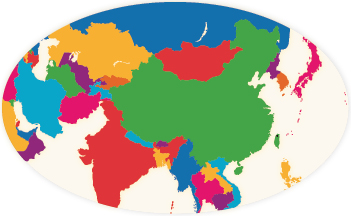Big Players Look to Acquire, Not Lend On, Asian Real Estate
By Alessia Pirolo October 8, 2014 6:30 am
reprints

The Asian distressed market business might be the Godot of real estate finance. Investors and analysts seem to have been waiting endlessly for opportunities in non-performing loans and distressed debt. But waiting in vain, it would seem.
Appetite for Chinese and other Asian troubled assets is booming. So far this year, funds have raised over $2 billion to invest in Asian debt, up from $303 million in 2013, according to London-based researcher Preqin. According to survey from the firm, in February 2014, 17 percent of real estate investors based in North America focused on Asian investments, up from 9 percent in July 2013. Among European investors, 41 percent targeted these investments in February 2014, up from 18 percent the previous year.
But looking specifically at the real estate market, as of September 17th, only four real estate debt-focused funds had closed and raised capital for $800 million, up from $700 million from last year, but far from the $2.1 billion in 2012.
“Be it Japan’s commercial mortgage–based securities tail, cash-starved Chinese developers, or failed REITs, the reality has generally fallen short of expectations,” according to PwC’s report Emerging Trends in Real Estate for 2014. “To some extent, this reflects a cultural reluctance to allow compromised deals to be recycled by the market as they are in the West.”
While international investment in non-performing loans is playing a big part in the recovery story in Europe, rules banning foreign investors from buying real estate debt in some jurisdictions, like China, and aggressive local banks have limited Western investment in the Asian real estate debt market.
“The market has recovered very strongly,” Priyaranjan Kumar, regional director for Capital Markets at Cushman & Wakefield Asia Pacific, told Mortgage Observer. The recovery meant that local banks were able to refinance their loans without selling NPL portfolios—limiting the potential bargains for opportunistic investors. “Prices are at pre-crisis level or higher, the volumes of exchanges are at pre-crisis level or higher… Asian banks are in very good health,” Mr. Kumar said.
Loan-to-value ratios have been growing across Asia. According to PwC, they commonly register 60 to 65 percent across Asian markets and can reach 80 to 85 percent in Japan. The crisis affected mainly foreign banks, which often just opted to leave the real estate debt sector in Asia, while local banks were still clinging to their business. Foreign banks’ share of the real estate lending market in Asia dropped from over 40 percent before the crisis to less than 30 percent now, according to Mr. Kumar.
There are some exceptions, particularly in the Japanese and Australian markets (Australia is frequently grouped in with Asia, despite the fact that it is its own market). For instance, between 2010 and 2012, Fortress Investment Group raised $2.4 billion for two Japan funds targeted to buy real estate debt backed by apartments, retail and hotels. The first fund, Japan Opportunity Fund, which focuses on nonperforming or sub-performing debt from Japanese banks, recorded annualized inception-to-date net IRR of 27.9 percent through June 30, 2014, Fortress said in its latest earnings call.
And between 2011 and 2013, Axa Real Estate Investment Managers raised $390 million for two Japan commercial-property loans funds.
Lately, the most active players among real estate-debt funds were Kotak Realty Fund and Piramal Fund Management, which are both Indian-based and focused on the Indian market. A lack of financing from Indian banks for real estate development has resulted in a funding gap that has created demand for alternative debt. In 2014 Kotak and Piramal have closed a $400 million and $164 million fund, respectively, focused on Indian distressed and opportunistic debt, according to Preqin.
But the largest international opportunistic players right now are looking at acquiring assets, not lending. Among private equity investors, Blackstone Group is expected to close Blackstone Real Estate Partners Asia, the largest private equity real estate fundraise for the region, by the end of the year. The fund had a target of $4 billion and a hard-cap of $5 billion. At July 2014, it had already raised $4.2 billion.



